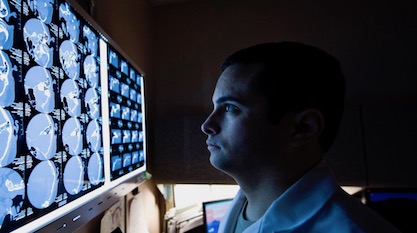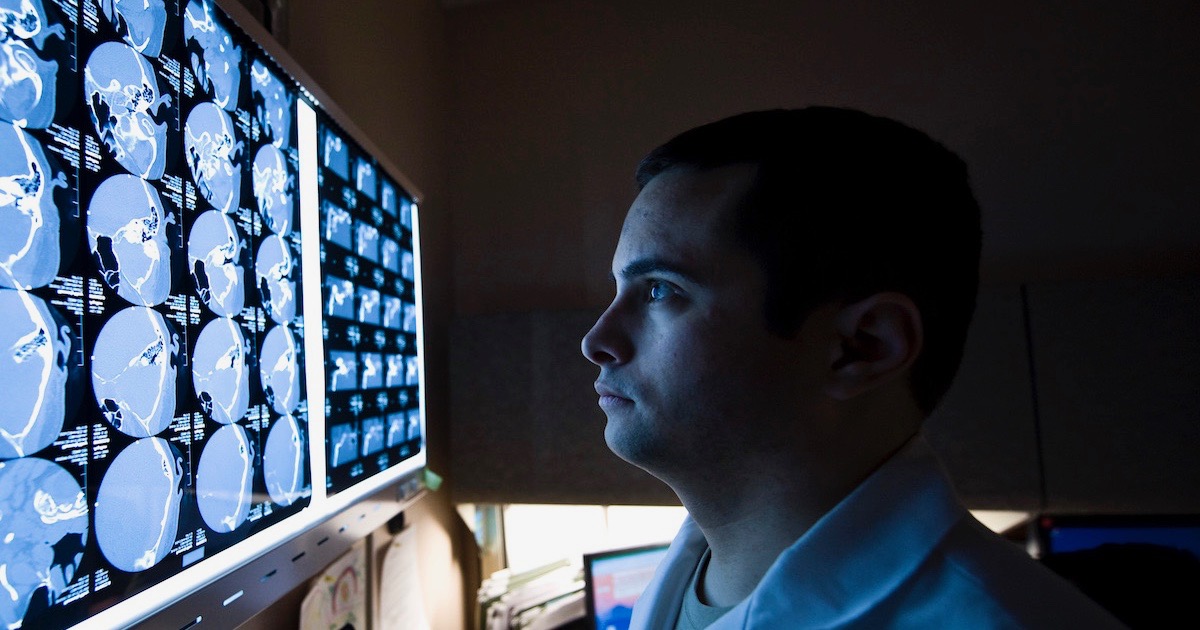 Medicine
Medicine
 Neuroscience & Mind
Neuroscience & Mind
Neuroscientist Michael Egnor, the Philosophical Physician, on Science and the Soul


Try to read this through to the end without getting chills. It’s an essay by neurosurgeon Michael Egnor, our friend and contributor, on “Science and the Soul.” Writing for Plough Quarterly, he starts very strikingly this way:
I watched the CAT scan images appear on the screen, one by one. The baby’s head was mostly empty. There were only thin slivers of brain — a bit of brain tissue at the base of the skull, and a thin rim around the edges. The rest was water.
Her parents had feared this. We had seen it on the prenatal ultrasound; the CAT scan, hours after birth, was much more accurate. Katie looked like a normal newborn, but she had little chance at a normal life. She had a fraternal-twin sister in the incubator next to her. But Katie only had a third of the brain that her sister had. I explained all of this to her family, trying to keep alive a flicker of hope for their daughter.
I cared for Katie as she grew up. At every stage of Katie’s life so far, she has excelled. She sat and talked and walked earlier than her sister. She’s made the honor roll. She will soon graduate high school.
I’ve had other patients whose brains fell far short of their minds. Maria had only two-thirds of a brain. She needed a couple of operations to drain fluid, but she thrives. She just finished her master’s degree in English literature, and is a published musician. Jesse was born with a head shaped like a football and half-full of water — doctors told his mother to let him die at birth. She disobeyed. He is a normal happy middle-schooler, loves sports, and wears his hair long.
Some people with deficient brains are profoundly handicapped. But not all are. I’ve treated and cared for scores of kids who grow up with brains that are deficient but minds that thrive. How is this possible? Neuroscience, and Thomas Aquinas, point to the answer.
One of the most fundamental questions separating the materialists who dominate contemporary academic and intellectual life from, well, everyone else is the question of the soul. Everything hinges on whether a human being is just a mechanism, or whether the mechanism is joined with a spirit.
“Only Thin Slivers”
If there is no such spirit joined with the complex organ called the brain, how is it that a baby born with “only thin slivers of brain” goes on to live a normal, healthy life with apparently excellent intellectual development?
Egnor answers in the final analysis that, “Katie, like you and me, has a soul.” But it’s how he gets there via the history of neuroscience and philosophy that’s really remarkable.
There’s also a helpful sidebar on “Recommended Reading” with generous helpings of Edward Feser, plus Benjamin Libet, Wilder Penfield, and Hannah Arendt. Do yourself a favor and read it now.
Photo credit: U.S. Air Force/Senior Airman Jason Couillard.
